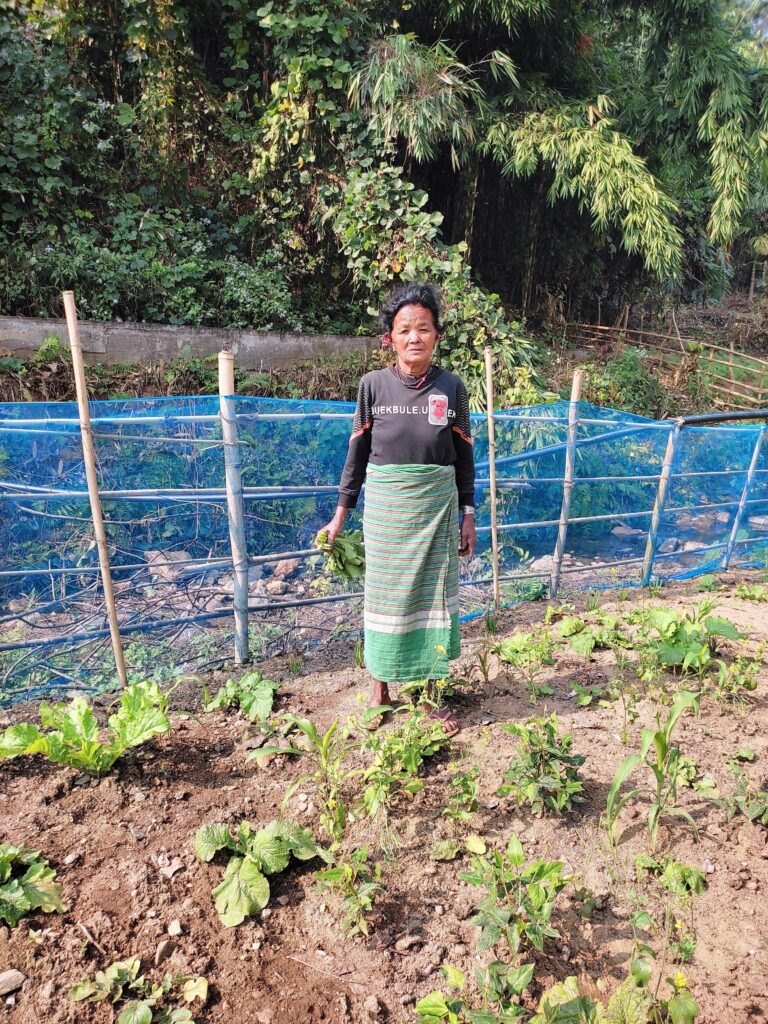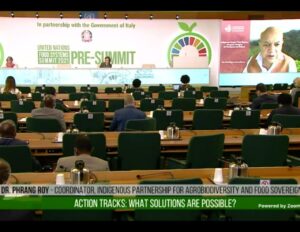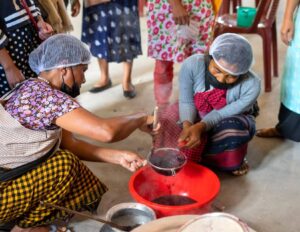Ambi Miron Cheran Sangma is a custodian farmer from the small hill village of Smok Songgital nestled below the Ranggira range in South West Garo Hills, Meghalaya. The community is an active participating village of NESFAS and is currently taking part in the ongoing NESFAS project, “Empowering Indigenous Communities through Agroecology Learning Circles (ALCs) for resilient, integrated and innovative natural resource management”, which is supported by MBMA and supported by the World Bank.
Ambi Miron cannot recall her age, though one can assume, from her salt and peppered hair, wrinkled skin and hunched back, that she will be in her late 70s or even 80s. The martriarch of the Cheran clan, and the wife of the headman or the Nokma of Smok Songgital, atchu Gancheng Ch Marak, ambi Miron is ever on her toes, and very active for her age. The couple is lovingly called “ambi” and “atchu”, in the Garo language, which, when translated into English means “grandmother” and “grandfather” respectively.

Both ambi and atchu have regularly attended various meetings, trainings and workshops facilitated by NESFAS team members in their premises for the ALC group at Smok Songgital, known as Ranggira ALC, aptly named after the range they came down from. They both hold a plethora of knowledge about plants, animals and farming passed on to them from their ancestors. Ambi, though not an ALC member, took keen interest in the project, and took up the task of conducting the ALC experiment chosen by the ALC group in her community. Thereby, she prepared a kitchen garden, on a plot of land below her house, and started growing varieties of vegetables, such as, pumpkins, yardlong beans, tomatoes, mustard, onions, maize, gourd etc. Each type of vegetable contains different sub-varieties. For maize, it is Jaha, Wa·sok, Binchi and Dikgil. For yardlong beans, it is ka·rek wachi (rainy season), and ka·rek a·rak (dry season). For pumpkin, the varieties are madilengga, tem·bik and gopma. Ambi knows each of these varieties and can identify each type by looking at the plants.

Currently, the members of the Ranggira ALC group are conducting the experiment on mustard saw fly that infests on mustard plants. The solution they have chosen to combat this menace is using a concoction of garlic and neem leaves boiled in water, cooled, strained and sprayed on the infested plant parts. Having learned of the solution through a technical training facilitated by NESFAS in the community earlier, ambi Miron also chose to experiment the same on her mustard plants, along with the ALC members. Ever since, ambi Miron has been tending to her kitchen garden well, eagerly waiting for NESFAS team members to give her a visit and inspect her activities. When the NESFAS team did visit her, she led them to her kitchen garden enthusiastically and proudly presented her work, a rich array of naturally grown, healthy vegetables. Thereafter, she harvested fresh mustard greens and gave them to her children, who made a delicious stew, for the NESFAS team as well as the community members.
People like ambi Miron are the examples of the ripples that ALC has been able to create and this is beneficial in attaining the goal of sustainability and food sovereignty. Their knowledge and work needs to be tapped and recorded well as testimonies and witnesses of indigenous food systems.



